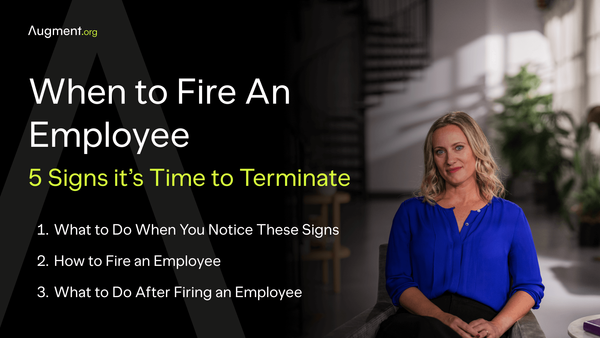Customer Journey Stages Explained
Understanding customer journey stages is crucial for tailoring strategies that resonate with every phase of a customer's interaction with your brand. From awareness to loyalty, each stage of the customer journey demands unique approaches to ensure customer satisfaction and retention.

What is the Customer Journey?
The customer journey encompasses every step a potential customer takes from first learning about a brand to becoming a loyal customer. It's a comprehensive map of the entire process, highlighting how customers interact with a business. This journey is not just about making a purchase; it's about the experience, the emotions, and the interactions that lead to customer satisfaction and loyalty.
It starts with initial awareness, where potential customers first encounter your brand, often through marketing efforts or word of mouth. As they move through various stages, including consideration and decision-making, they engage with different customer touchpoints like online searches, customer service interactions, and marketing communications. Each of these moments is an opportunity for a business to meet and exceed customer expectations, building a relationship that goes beyond a single transaction.
Understanding the entire customer journey is essential for businesses to identify pain points and areas for improvement. By mapping this journey, companies can provide excellent customer service and create a customer experience that not only meets but anticipates the needs of their target audience. This approach leads to higher customer retention and encourages repeat business, laying the foundation for long-term business success.
Why Does the Customer Journey Matter?
The customer journey is vital because it's the blueprint of a customer's experience with a brand, from the first point of contact to post-purchase interactions. The customer's journey shapes their perception and, ultimately, their loyalty to the brand.
Understanding the customer journey allows businesses to identify key touchpoints where customers interact with the brand. These interactions, whether it's through customer service, marketing materials, or the buying process, are opportunities to impress and engage the customer. By focusing on these moments, businesses can address pain points, streamline the customer experience, and ensure satisfaction.
Why is this important? Because satisfied customers often become loyal customers. They are more likely to make repeat purchases, engage in word of mouth marketing, and remain loyal to the brand. This loyalty not only brings in repeat business but also attracts new customers, as positive experiences are shared.
Moreover, by mapping the customer journey, businesses gain insights into customer needs and expectations. This understanding helps in tailoring marketing efforts and customer service strategies to meet those needs more effectively, enhancing the overall customer experience. As businesses cater to these needs, they build stronger relationships with their target audience, which is essential for long-term success and customer retention.
Customer Journey vs Sales Funnel
While both the customer journey and the sales funnel are critical concepts in understanding how customers interact with a brand, they represent different perspectives.
The sales funnel is a more traditional model, focusing on the stages a customer goes through before making a purchase. It’s often visualized as a funnel, where potential customers enter at the top during the awareness stage and narrow down to the few who make a purchase at the bottom. The sales funnel emphasizes the buying process, from initial contact to the final sale, highlighting the reduction of potential customers at each stage.
On the other hand, the customer journey is a broader concept. It includes not only the stages leading up to a purchase but also the post-purchase experiences and customer retention efforts. This journey maps out the entire experience of a customer with a brand, from the moment they become aware of it to the point where they become loyal customers and even advocates. It’s more focused on the customer’s experience and engagement with the brand across various touchpoints and channels.
The key difference lies in the scope and focus. The sales funnel is more linear and transaction-focused, while the customer journey is holistic and relationship-focused. Understanding both models helps businesses tailor their strategies: the sales funnel can guide marketing efforts to convert potential customers into buyers, while the customer journey provides insights into enhancing overall customer satisfaction, loyalty, and advocacy. Together, they form a comprehensive view of how customers interact with a brand, from the initial awareness to long-term loyalty.
What Are the Stages of the Customer Journey?
The customer journey can be divided into several key stages, each representing a different part of a customer's interaction with a brand. Understanding these stages helps businesses tailor their strategies to meet customers' needs at each point.
- Awareness Stage: This is where the customer journey starts. Potential customers become aware of your brand through various channels like online searches, marketing efforts, or word of mouth. At this stage, the focus is on capturing the attention of your target audience.
- Consideration Stage: Once aware of your brand, customers enter the consideration phase. Here, they begin evaluating your products or services against their needs and comparing them with competitors. Customer engagement and providing detailed information are crucial in this stage.
- Decision Stage: This is the point where customers make their purchase decision. The effectiveness of your marketing communications, the quality of your customer service, and the ease of the buying process play significant roles here.
- Retention Stage: After a purchase, the journey isn't over. The retention stage focuses on keeping the existing customer satisfied with their purchase, encouraging repeat business, and building brand loyalty. This stage involves customer feedback, loyalty programs, and excellent customer service.
- Advocacy Stage: Satisfied customers can become brand advocates. In this stage, customers not only remain loyal but also recommend your brand to others. Encouraging reviews, referrals, and engaging in user research can amplify the impact of advocates.
Each stage of the customer journey offers unique opportunities and challenges. By mapping out these stages and understanding the customer's needs and expectations at each one, businesses can create a more effective and cohesive strategy that enhances the entire customer experience.
Tips for Improving the Customer Journey
Enhancing the customer journey is key to fostering customer loyalty and satisfaction. Here are some practical tips to improve each stage of the journey:
- Optimize the Awareness Stage: Increase visibility through targeted marketing efforts. Understand your target audience and utilize channels like social media and online advertising to reach potential customers. Ensure your marketing materials are clear and engaging.
- Enhance the Consideration Stage: Provide comprehensive information about your products or services. Customer journey maps can help identify pain points in this stage. Use customer feedback to refine your offerings and address any concerns potential customers may have.
- Streamline the Decision Stage: Simplify the buying process to make it as easy as possible for customers to purchase. This includes having a user-friendly website, clear pricing, and efficient customer service. Visual representations of products and clear descriptions can help customers make informed decisions.
- Focus on Retention and Advocacy Stages: Post-purchase, keep in touch with customers through customer surveys, email updates, and loyalty programs. Encourage customers to share their experiences and use this feedback to continuously improve. Remember, satisfied customers are more likely to become repeat buyers and brand advocates.
- Continuously Map and Analyze the Customer Journey: Regularly review your customer journey mapping to ensure it aligns with customer needs and expectations. This should be a dynamic process, adapting to changes in customer behavior and market trends.
- Engage Across All Customer Touchpoints: Consistency is key. Ensure that every touchpoint with customers – whether it’s in-person, online, or over the phone – provides a positive experience that aligns with your brand values.
By focusing on these areas, businesses can create a more satisfying and effective customer journey, leading to increased customer loyalty, higher retention rates, and ultimately, business success.
Customer Journey Example
To illustrate the customer journey, let's consider a fictional scenario involving a customer, Alex, and their interaction with a company selling eco-friendly home products.
- Awareness Stage: Alex first learns about the company through a targeted online ad while searching for sustainable living tips. This initial awareness is critical, as it introduces Alex to the brand and its values.
- Consideration Stage: Intrigued by the ad, Alex visits the company’s website and browses through their products. At this stage, the company’s customer journey map ensures Alex finds detailed information and positive customer feedback, which helps Alex compare options and consider a purchase.
- Decision Stage: After evaluating different products, Alex decides to buy a set of eco-friendly kitchenware. The user-friendly website and clear pricing help make Alex’s online purchase process smooth and straightforward.
- Retention Stage: Post-purchase, the company sends Alex a thank-you email and a customer survey to gather feedback. Additionally, they enroll Alex in their loyalty program, offering discounts on future purchases. This stage is crucial for turning a new customer into a repeat buyer.
- Advocacy Stage: Satisfied with the product and overall experience, Alex recommends the company to friends and shares their positive experience on social media. This advocacy helps the company reach more potential customers, starting new customer journeys.
This example demonstrates how a company can guide a customer through different stages, from gaining awareness to becoming a loyal advocate, by addressing customer needs, pain points, and expectations at each stage of their journey.



